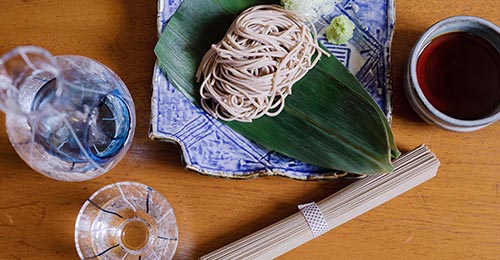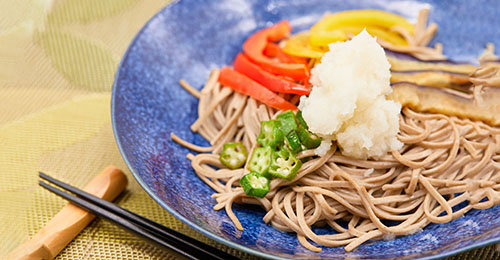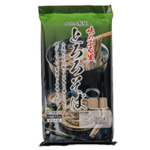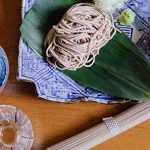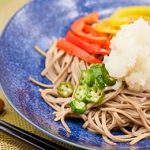Tororo soba noodles have light brown appearance and distinct nutty flavor.
The right selection of sake and tea service equipment not only brings a theatrical touch to the dining experience, but also unveils the true nature of the iconic Japanese beverages depicting a keenness for excellence.
AJINO FURUSATO TORORO SOBA
Sona noodles are made of flour from the hardy soba (buckwheat) plant. The plant was probably introduced to Japan via the Korean peninsula as far back as 10,000 year ago. Until the 19th century, when soba-noodle machine was invented, every soba noodles was made by hand. Soba flour is gluten free, so lacks elasticity and is difficult to handle, which is why rice, wheat or potato flour is added as a binding agent.

These gourmet noodles are made from a combination of buckwheat flour and wheat flour and yam, which gives them an earthy flavour and firm texture. High in protein and dietary fibre, and low in GI, soba noodles may help with heart health.
- TASTE PROFILE
- CULINARY USE
- COOKING INSTRUCTIONS
- STORAGE
In Japan, soba noodles dishes are eaten as snacks or as a one-dish. They are extremely versatile, delicious in hot-broth soup or served cold with dashi-based dipping sauce.
- Get a big pot of water boiling (don’t salt the water). Once it’s boiling, add the soba noodles, and give them a quick stir to make sure they all go under water.
- Let the water return to a boil, then reduce the heat a little, to keep the water at a simmer. Let the noodles cook for the time prescribed on your noodle package, probably between 5 and 8 minutes — set that kitchen timer! Meanwhile, ready your colander in the sink, and prepare a big bowl of cold water. (Not an ice bath, though: You want it cold, but not so cold you can’t comfortably stick your hands in.)
- Pull out one noodle from the pot to check for doneness. Soba should not be al dente, it should be fully cooked — but not cooked for so long that it is mushy. When the noodles are done, drain them into the waiting colander, and then promptly dump them into the bowl of cold water.
- Now wash your soba noodles. Stick your hands in the cold water, grab handfuls of noodles, and rub. Fairly aggressively. In a noodle-loving way. You’re washing off the excess starch, and thus preventing a gummy pile of noodles.
- Drain again in the colander, let them sit for a minute to let additional water drip off, and then proceed with your recipe. You can use them cold — try them dressed in a cold noodle salad or bundled into little nests for dipping into sauce — or you can warm them back up. Just give them a quick dunk in hot water or add to a soup right before serving.
Best to store in dry cool place away from direct sunlight. Once the original packaging is open, transfer into an airtight tapper ware.


